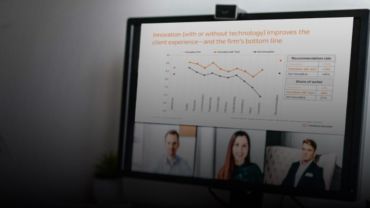The new Stand-out Lawyers mid-year survey shows that top lawyers still harbor some deep concerns about their role in the post-pandemic legal environment
While law firms as a group may have begun a rebound from the depths of the global pandemic, their lawyers still have a lot of questions about how the industry is going to handle a myriad of challenges, such as remote working, upgrading lawyer skillsets, hiring and retaining top talent, and implementing necessary technology to allow lawyers to be more efficient.
Most importantly, younger lawyers and female lawyers seem to be the least happy with the number of hours they are working, a factor that may be part of the reasons many in these groups leave the legal industry, or at least seek legal work outside of law firms.
To examine further the attitudes of lawyers and clients and how they impact law firms, Thomson Reuters has published its Stellar Performance: Skills and Progression Mid-Year Survey. Interestingly, the survey identified common mismatches between most lawyers’ most desired areas of responsibility outside of their billable hours — what lawyers want to be doing — and the actual non-billable work they do.
For this report, Thomson Reuters sent out an online survey in September and gathered responses from 1,170 lawyers in 50 countries who had been identified by their clients as “stand out lawyers” in our Sharplegal survey between 2015 and 2020.
The report also capitalizes on our research over recent years that has identified a subset of core competencies which all law firms and their lawyers should have and are of increasing importance to clients. The competencies include lawyers offering specialist expertise and acquiring business acumen; and law firms being able to offer high-quality service, technological efficiency, and pricing flexibility and consistency to clients.
Further, the report detailed key insights for law firms on those topics which directly impact these areas of competency, including:
Evaluating lawyer roles and responsibilities and how those may need to change — As we mentioned, the survey noted that many lawyers were unhappy with the hours they work and there were mismatches between the work lawyers want to be doing and what they are actually doing. Many law firms could make substantial gains in the areas of hiring and retention by addressing these inequalities in working hours and better matching their lawyers non-billable tasks to their lawyers’ individual interests.
Managing the impact of technology investment within law firms — The report notes how automation continues to be perceived as the one area of technology investment that will have the highest impact. Firms are also identifying more areas that could benefit from further automation, especially as the technology continues to develop. Also, the report revealed substantial opportunities for law firms to gain better returns on those tech investments they’ve already made because far too often previously implemented technologies are not being used to their full potential.
Identifying opportunities for firms to better leverage their environmental, social, and corporate governance (ESG) service offerings — The report suggests that while lawyers recognize the increasing importance of ESG issues to their clients, ESG service offerings overall are still at relatively early stages of development. Although 70% of survey respondents said they were confident they could make a case to clients that the firm could support them in their ESG goals, just about one-half are currently doing so. More firms should examine and clarify what they see as their ESG offerings and then showcased these services as client interest in this area continues to evolve, the report suggests.
Understanding how firms can improve the effectiveness of the law firm/client partnership — Law firms need to work to improve the firm’s key client relationships by highlighting their ability to be a partner in three key areas — pricing, scoping, and project management. For both law firms and their clients, these areas are mutual responsibilities and offer numerous dual-benefits when the partnership goes well. Yet, both law firms and clients need to understand that any meaningful improvement in any of the three areas requires collaboration and mutual support. The report offers a range of suggestions for law firms seeking to improve the effectiveness of their partnership with clients.
You can download a copy of “Thomson Reuters Stellar Performance: Skills and Progression Mid-Year Survey”, by filling out the form below:







